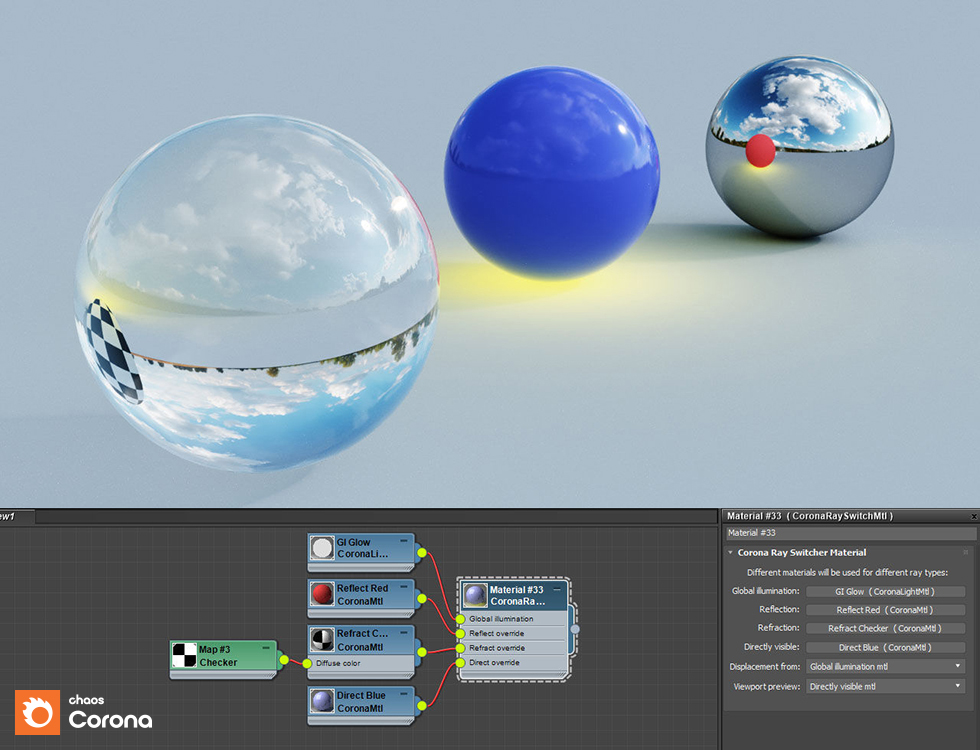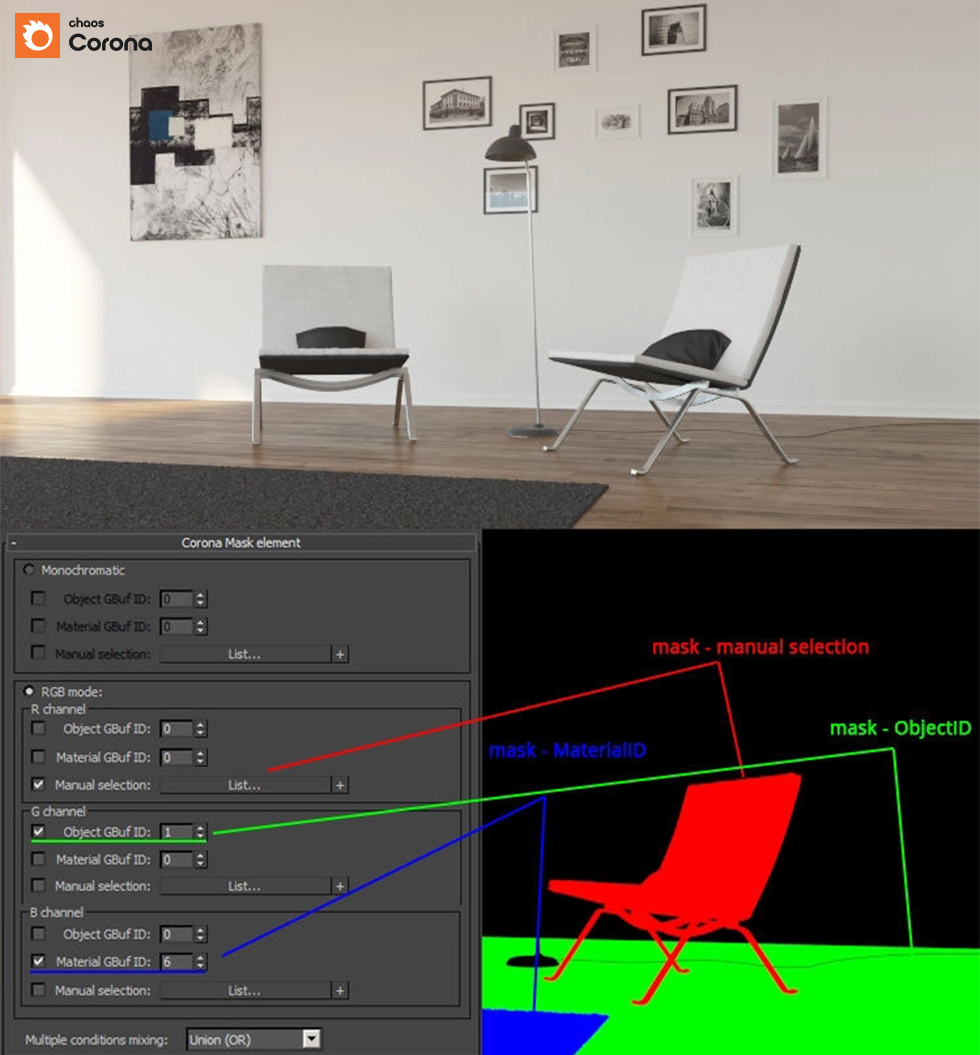Flexibility
Sometimes reality has to be bent to get the job done.
Be a rebel – break the rules.

Sometimes reality has to be bent to get the job done.
Be a rebel – break the rules.
Chaos Corona is extremely flexible. While we aim for realism, we also understand how important it is to sometimes “bend” physical laws to deliver the results your clients expect. To keep your artistry free, Corona includes several features which allow you to get exactly the effect you desire!

You can make any light source invisible to the camera, as well as invisible to reflections/refractions. Shadows can be turned on or off, and specific objects can be included/excluded from receiving illumination from any Corona light. Backplates can be easily created with the invisible to GI option. Corona also has great support for native 3ds Max and Cinema 4D lights.

The Rayswitcher material and texture allow a wide range of artistic tweaks when rendering with Corona. Use them to create materials invisible to camera, to create materials that don’t affect GI, to reduce or increase color bleeding, to have an object show differently when it is reflected vs. viewed directly, and more.

The image above uses a RaySwitch material so that the center ball shows a blue material when viewed directly, emits a yellow glow to GI, is red when viewed in reflections, and has a checkered texture when seen through refraction.
You can use different environment maps for reflections, refractions and direct visibility from the camera. For example, you can use a clear sky HDRI as a light source and a second cloudy HDRI just for reflections and refractions.
You can also add multiple environment maps, multiple procedural skies, and multiple suns, so that you get different times of day in just one render. You can then use LightMix either in the VFB or in the Corona Image Editor to adjust and save those different times of day, all without re-rendering. Read more about LightMix and all it has to offer.

Corona implements its own shadow catcher (matte/shadow) solution. It is a single material with all the necessary controls in one place – there is no need to combine special materials with other special texmaps. It works especially well with our interactive rendering for rapid camera and illumination matching. Advanced features, such as light illuminators and matte bump mapping, are of course supported.

Even with all the power of the VFB, you may still need or want to make adjustments to specific parts of an image in third party software, such as tinting the color of just a car body, or adjusting the brightness of just a mirror, etc.
Cryptomatte is an industry-standard that makes this easy, giving you masks based on object Names, Materials, Layers, or Names with Hierarchy, all saved into an EXR. Cryptomatte exports are able to better handle Depth of Field and Motion Blur (which otherwise can cause fringing or blurring at the edges of other mask types).

Notice how the cryptomatte mask works with depth of field.

Cryptomatte also works with motion blur.
Creating masks in Chaos Corona is an easy process. You can create monochromatic as well as RGB masks simply by specifying Object ID, Material ID or by directly picking objects in the scene. You can combine different selections as union or intersection.

You can also choose whether a material should make masks visible in its reflections, refractions, both, or neither:

Waiting through a final rendering just to discover that you forgot to set one mask can be very annoying. Usually you would have to create a copy of the scene, turn off lights and GI or set up material overrides to speed things up, and render again. Corona has a better solution: simply set up the missing mask and check the “Render only masks (disable shading)“ option to render only the masks and other render elements without the time–consuming beauty pass.

At any point during the rendering process, you can save the contents of the frame buffer into a single .CXR file. This includes all the rendering passes as well. You can then open another scene or even close the application, and later resume the original render right where you left of.

With one click you can enable the Autosave function, which will save the rendering progress every few minutes in an .exr file. So if your render or computer crashes, you have the latest progress saved. You can either use the .exr as it is if the render had progressed far enough, or resume the rendering from it if needed.

Using a Corona Camera, you can export images in Spherical or Cubemap format ready for viewing in a wide range of VR applications.

While stereoscopic and panoramic images can be used in any VR software of your choice, there is especially close integration with theViewer from theConstruct, allowing you to create and manage your warp points in 3ds Max without the need for an external editor.
We invite you to test drive Chaos Corona for FREE for 30 days without any limitations! Get the trial.